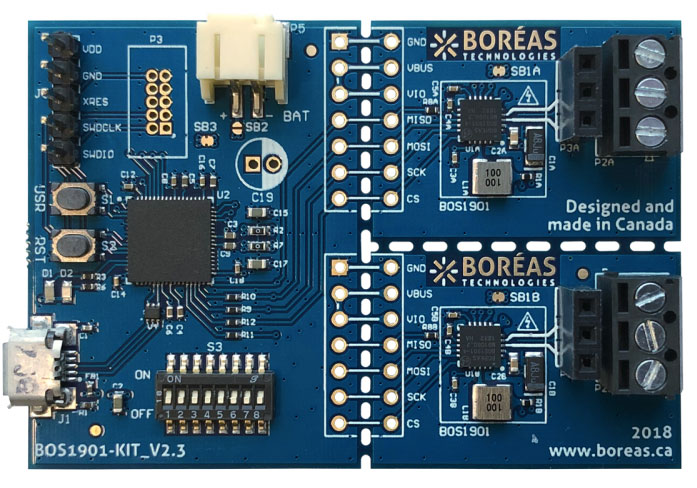Haptic Technologies Roundup: Piezoelectric ICs, AR/VR Gloves, and Haptic Clothing
Haptic technology has come a long way in the past few decades and continues to find innovative improvements and applications across industries. Here's a quick look at some recent haptic technology-related news.
Haptic technology has come a long way in the past few decades and continues to find innovative improvements and applications across industries. Here's a quick look at some recent haptic technology-related news.
Haptic technology is a term that refers to an interface that utilizes tactile feedback. It spent many years as a fringe domain with previous incarnations that were typically large, bulky, and relatively crude in their execution, such as the old-school video console controllers with a motor spinning an ERM (eccentric rotating mass) to create vibration (not unlike an off-center washing machine).
While some modern implementations may still utilize ERM or similar methods to achieve haptic feedback to users, other methods such as using piezoelectric actuators have allowed haptic technology to seamlessly integrated into smaller, sleeker devices such as smartphones.
In the last few years, haptic technology has gained even more traction, partially driven by the growing and accessible virtual/augmented reality domain in which touch feedback complements the experience.
It’s estimated that the market for haptic technologies will grow to USD 22 billion by 2023, and will comprise largely in software, drivers, controllers, and actuators.
Here are a few developments in the haptic technologies domain, providing a little more insight on what to expect in the coming years, and unique ways haptic feedback is being achieved.
Low-Power Piezoelectric Integrated Circuit for HD Touch
Boréas Technology, based in Canada, has developed the BOS1901 piezo actuator driver for high-definition haptic feedback. The company reports that the actuator is 10x more energy efficient than similar piezo-based competitors, and up to 20x more efficient than other types of haptic feedback actuators such as Linear Resonant Actuators (LRA) and (ERM). The haptic feedback is also reported to be fine enough to create the illusion of textures.

The BOS1901 piezo actuator driver. Image used courtesy of Boréas Technology
The BOS1901 is designed to overcome challenges in power consumption, heat dissipation, and form factor, targeting applications in wearable devices, mobile devices, video game controllers, and other battery-based applications. The actuator uses a proprietary CapDrive technology, capable of up to 190 Vpk-pk waveforms powered by a 3 to 5.5 V source, and starts up in less than 300 seconds.
Boréas has a development kit available that is described as "plug-and-play", using standard USB audio protocol for waveform development so that the user can prototype haptic waveforms quickly.

Image courtesy of Boréas Technology.
Kinesthetic Feedback Gloves for Object Sensing
Researchers from the Swiss Federal Institute of Technology (ETH) in Zurich and École Polytechnique Fédérale de Lausanne (EPFL) Soft Transducer Laboratory have developed a haptic glove that is only 2mm thick, weighs less than 8 grams, and operators on a few milliwatts of power to create the illusion of objects and surfaces.
The gloves, made out of cotton, contain metal strips that run the length of each finger. When a voltage is applied, the strips create tension that prevents fingers from moving, which in turn tricks the brain into believing there is an object in the user’s hand. This method of "preventing movement" instead of creating movement, a type of kinesthetic feedback, is part of why the gloves require so little power.
The gloves can create a force of up to 40 Newtons for each finger using 200 volts. The researchers are currently working on expanding this technique to create haptic feedback clothing for other parts of the body, and expect the video game players to be one of their main audiences. They also believe that there are potential applications for augmented reality and even in healthcare for training surgeons.
Haptic Feedback Clothing that Gives You Directions
Wearable X is a company that is using haptic, audio, and visual feedback integrated into articles of clothing. While the concept of haptic feedback clothing in itself is not entirely new, the company uses it for novel applications that sheds light on how haptic feedback can be taken better advantage of for everyday tasks. Specifically, Wearable X is trying to provide wearers the same information you could get from your smartphone, without always having to look at your smartphone.
One of their first products is the Navigate blazer incorporates vibrating motors embedded in the back of the coat, and a paired smartphone app, to give the user directions. Direction is indicated by position and intensity of vibration on the clothing (so a strong vibration on your left would indicate a sharp turn left). So far directions in Paris, Sydney, and New York have been implemented in the Navigate app.

Navigate Blazer. Image courtesy of Wearable X.
The company also has fitness apparel. Nadi X yoga pants, which are available commercially later this year, use haptic feedback using sensors placed around the hips, knees, and ankles, which guides the wearer through yoga routines loaded from a paired smartphone app. The user will always receive immediate feedback to correct or guide their posture. This may help wearers achieve safer, more effective exercise as personal attention from a yoga instructor is not always accessible.
What other applications of haptic technology—or methods of achieving it—do you have experience with? Share your thoughts in the comments below.







